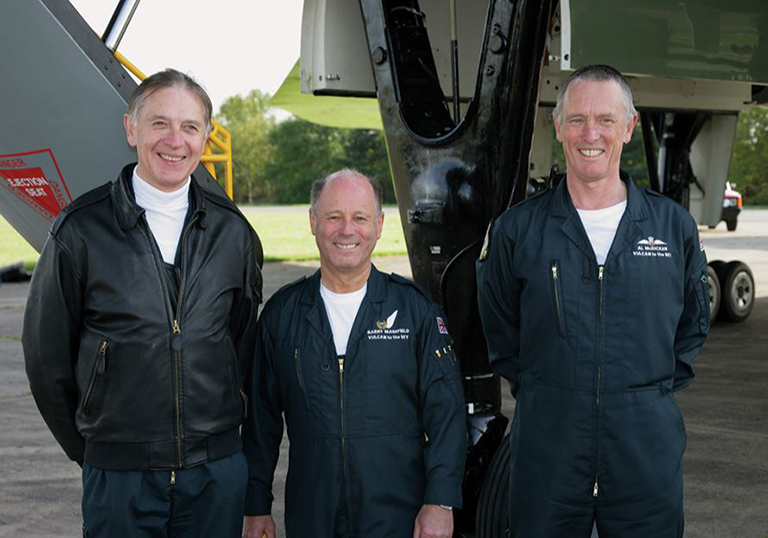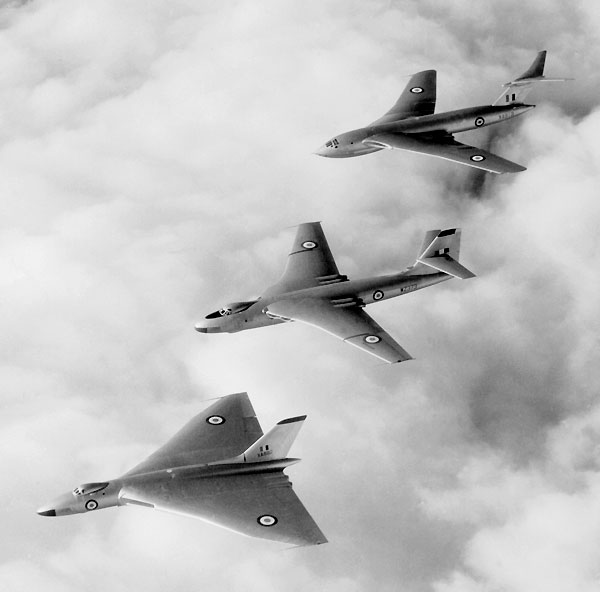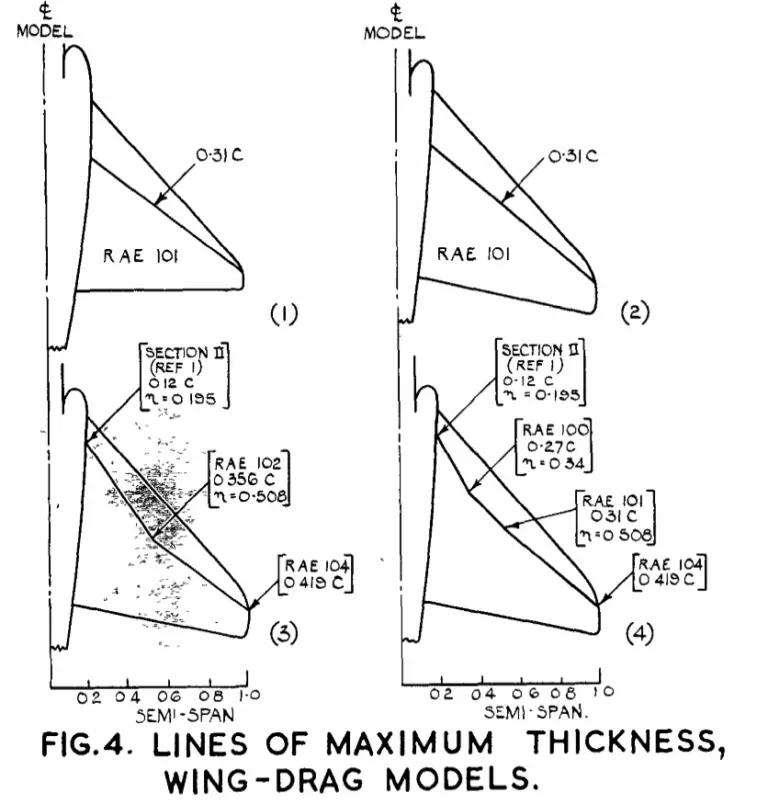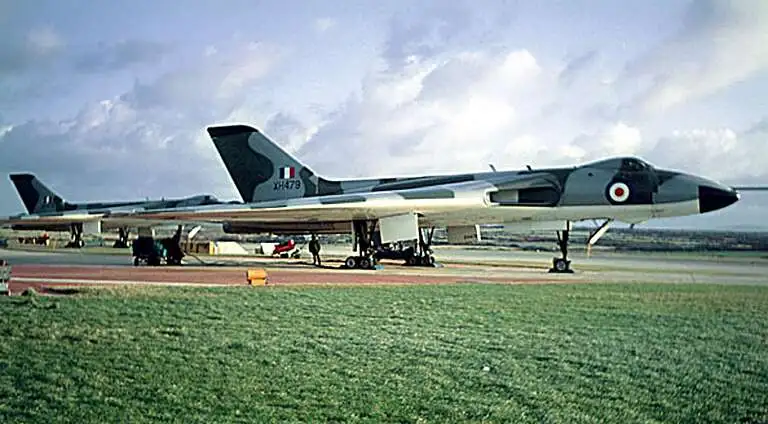
Ramblings from the AEO’s Panel – Part 5
Barry Masefield was the Air Electronics Officer (AEO) for Vulcan XH558 and had flown in this iconic aircraft for over 30 years, also being a key

In March 1959 I was posted to Headquarters Bomber Command (HWBC) at High Wycombe. At the time I was a Flight Lieutenant Navigator with a permanent commission and a specials signals qualification. (Having completed a year’s course at RAF Technical College on Radio and Radar). I knew nothing about Bomber Operations, my operational experience being in Coastal Command.
The A.O.CinC at the time was Sir Harry Broadhurst (later succeeded by Sir Kenneth Cross), my boss as Signals 1(a) was the Command Signals Officer, Air Commodore Ben Ball. The aircraft of the command were mainly Victors, Valiants and English Electric Canberras, but a squadron of Lincoln’s was retained for mine laying around Denmark. Squadrons of Vulcan’s and Victor’s were fast becoming operational but there were as yet no plans for their use, and initially no effective means of control from Command HQ.
The Operations Room at High Wycombe in March 1959 was just about as it had been at the end of WW11: as if “Bomber Harris” had walked out saying “Last man out switch off the lights”. That was the situation as the “Cold War” became steadily colder as Russian missiles overtook aircraft as the greater threat. Fortunately plans had been made and even as I arrived the highest priority had been accorded to the Command. Nuclear Weapons, tested in Australia and then at Christmas Island in the Pacific, were coming available, but the problem was how to load them onto the aircraft and get them into the air before the Russian missiles and bombs arrived.
The basic plan was that in times of particular political tension, aircraft of the Command would disperse around the UK, usually two or four aircraft to each of more than 20 dispersal airfields, in addition to the usual Command bases. In the event of an attack by the USSR it was the aim to get every aircraft off the ground within three minutes of the take off instruction. Three minutes was the predicted warning time available based on many sources, but primarily from Fylingdales radar in North Yorkshire.
In the months following my arrival, the whole Command was in turmoil. Runways at dispersal airfields were being lengthened, hardstanding’s and accommodation were being built. The Operations Centre was gutted and re-furbished and, most importantly, hundreds of new telephone lines and radar circuits were put in so that, come what may, instructions could be passed to every aircraft on the ground or in the air. It took about a year to complete this phase of the re-organisation and by the end the “Bomber Controller” could be heard simultaneously by every crew waiting in their aircraft at dispersal. It had also been proved that all the aircraft could be in the air within three minutes. The cost had been enormous: every telephone circuit was either duplicated or could be replace by teleprinter and / or W.T. in the case of failure, and auto-start standby power supplies could replace the public electricity supply whenever necessary.
During all this time my colleague, Signals 1(c), was providing the new complex Signals Instructions for the many overseas training exercises, many of these involving air-to-air refuelling, in those days very much an innovation. Meanwhile I attempted to keep track of all the new facilities available in the Operations Room since I was expected to be the expert on such matters should an emergency arise. The other aspect of my job became clear some weeks after my arrival when I was introduced to Wing Commander Ken Hubbard who had been the pilot of the Valiant which dropped the first British H-Bomb. He had just arrived at High Wycombe and was charged with preparation of the operation order by which the “V” Force would go to war if circumstances demanded. I was to write the Signals Annex (and later) a somewhat simpler document for the Camberra Force.
The writing of the Signals Instruction / Signals Annex would not normally present many problems to one trained in the art, but this one was different. Instead of a few aircraft this one was for the entire “V” Force. Moreover the whole enterprise had a security grading of TOP SECRET / ATOMIC / UK EYES ONLY and was additionally subject to a very strict “need to know” basis. In its totality the Signals Annex spelt out every call-sign, frequency, codeword, and most significantly, named every target for the “V” Force. Hence, the “Need to know” ruling presented me with particular problems since even my own bosses in Command Signals could not be told some of the content. In the draft stages everything was written in longhand, every time I left the room all working papers, scrap paper, blotting pad etc had to be locked away, and each night unwanted materials was burnt and everything else was locked in Wg Cdr Hubbard’s safe. There was one typist cleared to type up the final draft, she was a Civil Servant, and I suspect, the wife of a senior office. It was she who typed the final product onto a wax stencil which was destroyed after a very limited number of numbered copies had been run off.
The completed Operation Order was broken down so that each Group, Station and crew knew only the details which applied to their part (although provision was made for crews to have alternative targets, and in case some part of the organisation should be “knocked out”.
Obviously each crew had to know its wartime target because it had to pre-plan its flight. For myself I became an unexpected expert of the geography and economy of the USSR and when, many years later, the nuclear reactor at Chernobyl caught fire, I knew without a map where and what was there.
A major item in the operation was the need for a Go / No Go message. Once the aircraft were airborne they had to receive a message, properly authenticated, to say whether they should proceed to target or return: if even one aircraft got this wrong and set off into “enemy” airspace when the alert was a false alarm, the Third World War was likely to be initiated. To ensure this message got through, possibly in the face of massive jamming of radio channels, all manner of alternative facilities were available. In addition to the usual VHF voice and HF W/T frequencies (UHF and HF voice were not available initially) there was provision for the Operations Room to take control of designated transmitters at Master Radar Stations on the east coast and a well known UK/Europe wide BBC transmitter.
It was of course necessary to practise the plan in so far as dispersal, increasing readiness states, take off and a simulated wartime sortie were concerned. The problem was how to do all this while giving as little away to the listening Russians as possible. I was sent off the GCHQ at Cheltenham to learn some of the hush-hush world of signal intelligence but whatever was done I am sure the Russians knew exactly what was planned. I think it was about this time it was indicated to me that except on duty, travel might not be a good idea for a while.
Each year, the “V” Force participated in the annual bombing competition against the USA Strategic Air Command, the team for this being chosen in a UK competition. In order to ensure fair play, each aircraft had to carry an umpire and for this all the suitably qualified staff officers at HQBC and groups were utilised. So it was that I gained quite a number of Valiant sorties in my logbook: though I have to say that coming from Coastal Command where we bombed from 300ft or below, I am far from sure that I would have known if someone had broken the rules radar bombing from 40,000ft.
In May 1961, just over two years after arrival, the small team responsible for the war operation order were posted away. Presumably it was considered we had done a reasonable job because we were all promoted. It was a pleasant change not to keep Operations Room always aware of ones movements, or to be woken at 6am on a Sunday morning to be called in not knowing if it was for real or not.
Would it all have worked if one of the call-outs had been for real? Fortunately for the world it was never put to the ultimate test so we shall never know. But in a way it did work because the whole idea was to deter, and no attack ever came. Whether this would have been the situation without the “V” Force – who knows.
Squadron Leader Colin H Taylor RAF (ret’d)

Barry Masefield was the Air Electronics Officer (AEO) for Vulcan XH558 and had flown in this iconic aircraft for over 30 years, also being a key

Barry Masefield was the Air Electronics Officer (AEO) for Vulcan XH558 and had flown in this iconic aircraft for over 30 years, also being a

Dr Steve Liddle CEng FRAeS, is a Vulcan to the Sky Trustee and Principal Aerodynamicist at Aston Martin Formula One Team. The articles here are

Our thanks to Jeremy Lewarn who recalls his time in the RAF in this detailed article. My memories of the Vulcan start from when I first